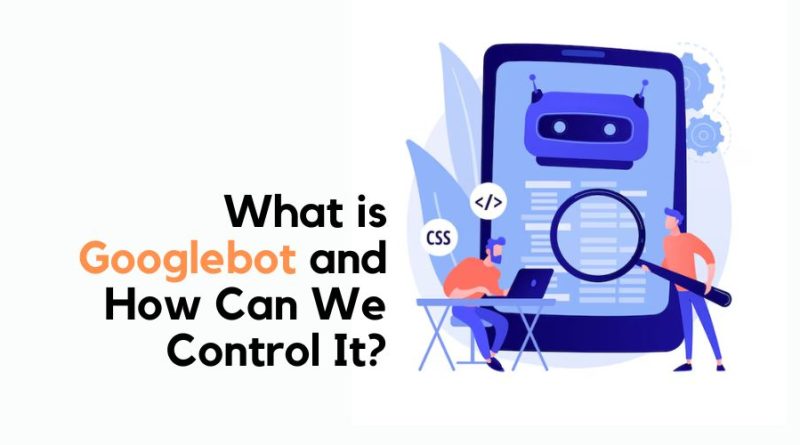What is Googlebot and How Can We Control It?
As mentioned before, Googlebot is an automated program that Google uses to discover and collect information about your website. It helps Google’s large databases stay up to date by frequently crawling websites.
But, did you know there are different versions of Googlebot?
Yes, Google Search has two web crawler types for your Desktop and mobile versions:
1. Googlebot Smartphone: A mobile crawler that discovers and collects information as if they were a user on a mobile device.
2. Googlebot Desktop: A desktop crawler that discovers and collects your website information as if they were a user on a desktop computer.
Google Search also has specific crawlers like Googlebot Image, Googlebot News, and Googlebot Video.
If you have learned the basics of SEO, the first question that might pop up in your head is which version will Google prioritize?
Well, Google has clearly stated that for most websites, it indexes the mobile version.
Why Do You Think Googlebot is Important for SEO?
Without Information, Google Search will have nothing to display on the search result. Remember the different stages of Google Search? There are 1.1 billion websites as of the 2024 stats report. Google cannot directly go and visit each website for information, this is why, it created automated programs called Googlebot to crawl and index information.
If you have blocked Googlebot crawlers from visiting or indexing your website, you will never be visible to users and rank on search engine results pages (SERPs). Without ranking, you will have zero organic search traffic.
Also, Googlebot frequently visits your website to gather new information and updates.
Let’s say, you created a new webpage or made changes to an existing webpage, how do you think will Google know and reflect your changes on search results? Googlebot, in this case, plays a key role as it often visits your website and grabs new updates that help maintain your site visibility and keep your readers up to date.
However, today there are also a few fake crawlers that act like Googlebot crawlers and visit your website.
How to Identify or Verify the Subtype of Googlebot?
There are a few methods that can help you differentiate between fake crawlers and real Googlebot crawlers:
- Check your user-agent request header.
- Verify the source IP address of the request and match it with Google’s official list of IP ranges.
- Use the Reverse DNS lookup on the source IP of the request.
How Often Does Googlebot Visit?
Remember too much of everything is good for nothing. If your website encounters too much crawling, it can have various consequences. Keeping this in mind, Google ensures that the bots and crawlers visit each website once every few seconds over short periods.
However, in some cases, people request crawlers to visit more frequently or bots automatically visit too often which causes site issues. For this situation, it is best to adjust your crawl rate.
Before we proceed with how to control Googlebot from accessing your content, it is important to understand what and how much Googlebot crawls on their visit to your website.
Generally, Googlebot processes only the first 15MB of your HTML or text-based file. CSS and Javascript are counted separately and their file size limit is also 15 MB. The file size limit is even applied for uncompressed file versions.
Once Googlebot processes the first 15MB, it stops crawling and forwards the processed information for indexing consideration.
Just like Googlebot Search Crawlers, there are also different limits set for Googlebot Image and Googlebot Video Crawlers.
How to Block or Control Googlebot from Accessing your Content?
Most people will say block the crawlers using robots.txt file. Correct, but there is one thing you need to know. Blocking Googlebot doesn’t prevent your page from appearing in search results.
Confused?
Let’s say, you created a page for your website and it got indexed in search results. After a month, you no longer want Google to index that content. So, you go to robots.txt and block the crawler from visiting your page. But, the page is already indexed, remember?
- Robots.txt helps add instructions to prevent from crawling.
- To stop indexing your content, you must use the NOINDEX TAG.
- If you want to prevent access entirely, it is best to use a password-protection method.
You must be smart when adding instructions to your robots.txt file.
In fact, apart from Googlebot, there are various other bots that are being practiced today, for example, GPTbots.
There is nothing to hide in the fact that AI will soon become a part of our marketing practice. In fact, with the pace its growing, there is a good chance that it will be used with our SEO Strategies.
Should you block GPTbots? Here’s a look at how major brands are handling it.
How to Monitor Googlebot Activities?
You can even track Googlebot’s activity on a regular basis using Crawl Stats Report in Search Console.
- Log in to your search console account and select your property.
- Go to “Settings” from the left-hand menu panel.
- Under the Crawling section, you will find the Crawl Stats Report.
- After opening the report, you can easily track your crawl requests, download size, and average response time.
Before ending this blog, here is one more thing that you must know. Google clients are classified into three categories:
- Common Crawlers: Googlebot respects and works as per robots.txt rules, falls under the common crawlers category. To check the common crawlers list, click here.
- Special-Case Crawlers: These are quite similar to common crawlers but used by specific products where there is an agreement for the crawl process between the site and the Google product. To check the special-case crawlers list, click here.
- User-triggered fetchers: These crawlers are initiated by the end users for fetching functions within a Google product. To check the user-triggered fetchers list, click here.
For more such information, follow on LinkedIn.
